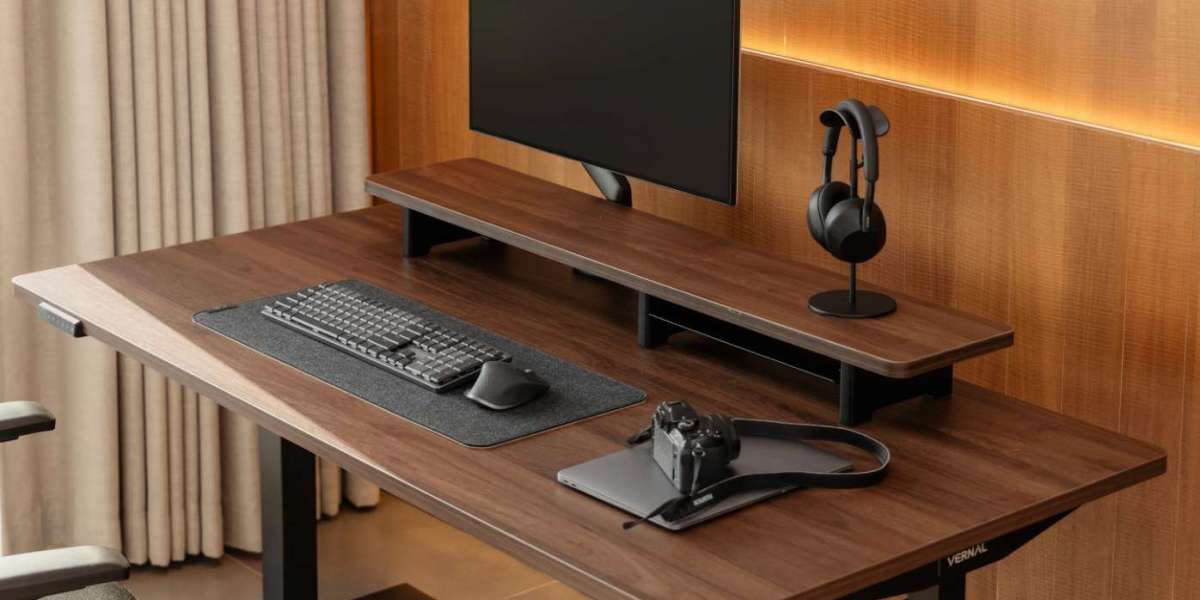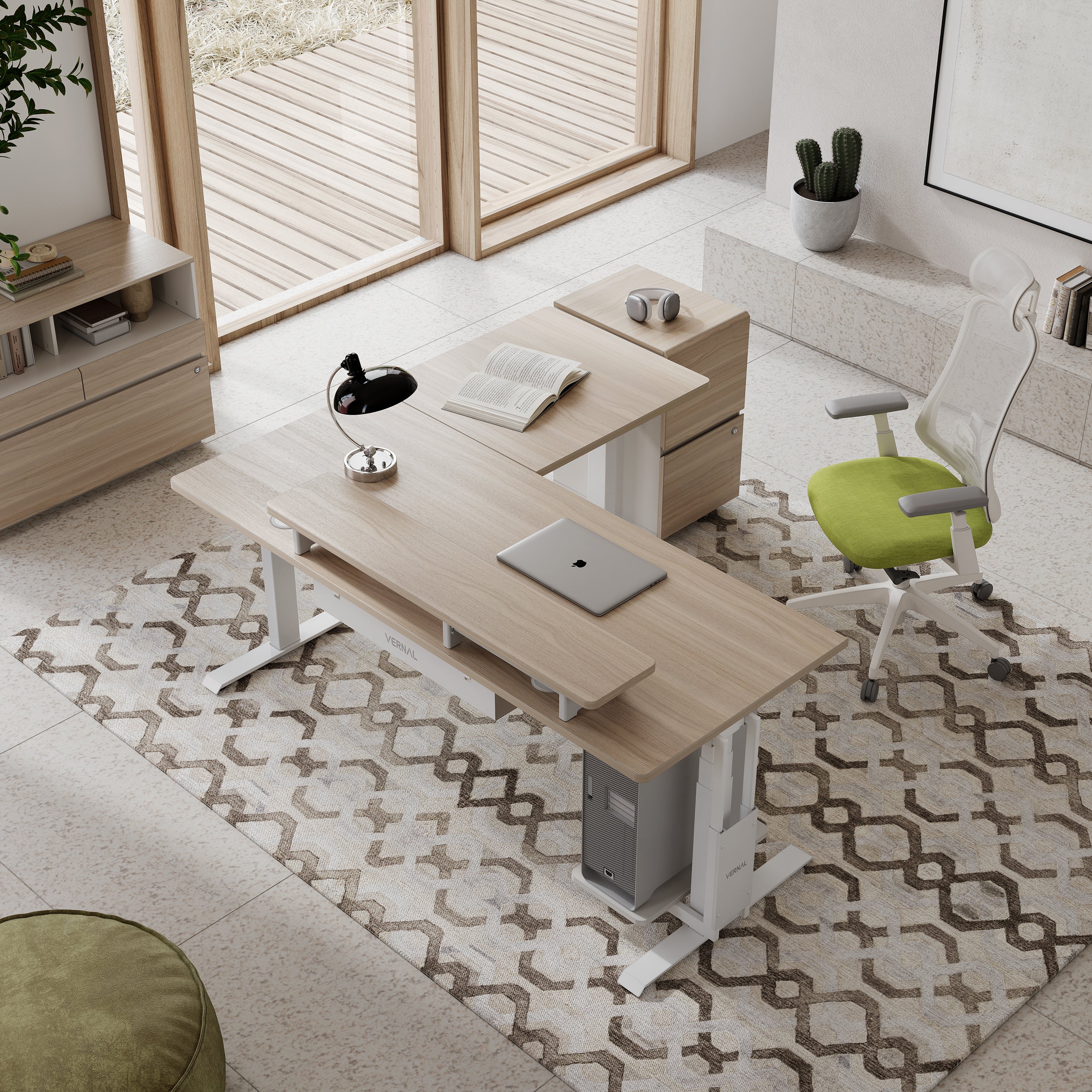Standing Desk setups that reduce cognitive fatigue
First, think of your standing desk as a workstation engineered for sustained attention. Place your primary monitor so the top third of the screen is at eye level to avoid neck strain. Use a secondary monitor for documentation, logs, or terminal output and angle it slightly inward to keep your head centered. Keep frequently used items—whiteboard markers, notebooks, dongles—within arm’s reach to minimize disruptive reach and micro-breaks. Programmable height presets or quick-access buttons make it easy to return to an optimal position after hopping between tasks.
Use a Stand Up Desk routine to split deep work and shallow tasks
Map your daily workflow so standing and sitting align with the cognitive demand of tasks. Reserve standing for creative or high-energy blocks—architectural design, pair programming, code reviews—when alertness is paramount. Sit for long, methodical debugging sessions or when you need to immerse in long reads. This intentional pairing turns standing into a cognitive cue: when you’re upright, your brain recognizes it’s time to be bold and decisive. Use short standing intervals (20–40 minutes) with seated breaks in between to prevent fatigue.
Choose the right Adjustable Desk for your body and workflow
Not all adjustable desks support a developer’s toolkit. Look for a stable frame with a height range that fits your stature (and any collaborators who share the desk). If you use heavy dual-monitor arms, verify load capacity and rigidity at standing heights—wobble equals distraction when you type aggressively. Cable management trays and headset hooks keep the surface clear so your focus isn’t punctuated by tangled cords. Precision controls encourage more frequent posture changes, which drives the long-term health and productivity benefits.
What to look for in the Best Adjustable Desk
The best adjustable desk for a programmer balances durability, speed, and convenience. Dual-motor lifts are faster and steadier; memory presets let you save sitting and standing heights for different modes (coding, meetings, reviews); and anti-collision sensors protect expensive hardware. If you pair the desk with a comfortable mat and a low-profile keyboard tray, you’ll sustain longer standing sessions without wrist or foot fatigue. Think of the desk as infrastructure: a small upfront investment in quality reduces distractions and repair headaches down the road.
L Shaped Standing Desk: ideal for multi-context workflows
Many developers juggle coding, documentation, test consoles, and design sketches. An L shaped standing desk gives you distinct zones—one wing for your main development environment and the other for reference materials, a secondary laptop, or review spaces. This separation reduces context switching friction: move physically to the other wing to switch cognitive modes. If you frequently host pair programming sessions, the corner layout creates a natural collaboration area without compromising your core ergonomics.
How an Executive Standing Desk changes leadership workflows
Senior engineers or tech leads often need a workstation that supports immersive work and leadership tasks. An executive standing desk provides extra surface area for design prints, meeting notes, and collaborative artifacts. When you lead stand-up meetings or walkthroughs from a standing position, you’ll naturally set a brisker pace and clearer expectations. The executive layout also accommodates in-person whiteboarding near your screen, making walkthroughs more interactive and memorable for teammates.
Wooden Standing Desk aesthetics that improve focus
Designers and cognitive scientists agree that environment affects mental state. A wooden standing desk or warm natural surface can make a workspace feel calmer and less clinical, lowering stress and improving concentration. If you spend long hours in deep work, a desk that feels pleasant to touch and visually cohesive with your home office can make standing sessions more enjoyable and sustainable. Just ensure the finish is durable enough for heavy keyboard use and occasional spills.
Vernal Standing Desk insights and a practical Vernal Review note
When exploring models, look for real-world feedback. For example, users often praise desks that combine quiet motors, precise presets, and sturdy frames because those features remove friction from posture changes. A balanced review—covering assembly, daily stability under dual monitors, and how well presets hold up—gives you a realistic sense of whether a desk will support your intense coding habits. If you consider a specific model, check long-term user experiences about wobble, warranty service, and motor life to avoid downtime during sprints.
Bonus habits: micro-movement, ergonomic peripherals, and timeboxing
Standing desks are powerful, but they work best when paired with healthy habits. Timebox work using short sprints (e.g., 45 minutes) and use standing for sprints that require high energy. Add micro-movements—calf raises, gentle hip openers, or quick walks between commits—to keep circulation flowing. Choose a mechanical keyboard with tactile feedback to reduce strain and consider a low-profile mechanical switch for comfort. A compact, adjustable monitor arm and a standing desk keyboard tray help keep wrist and elbow alignment neutral when you alternate positions. Lastly, invest in a quality chair for seated recovery; alternating well beats overdoing either posture.
Conclusion: standing as a tool for smarter code
For programmers, a standing setup is more than a posture hack—it’s a productivity ecosystem. The right combination of desk type (standing desk, L shaped standing desk, or executive standing desk), solid ergonomics (adjustable desk with presets and keyboard tray), and sustainable habits (timed sprints and micro-movement) creates an environment where focus, creativity, and endurance thrive. Test configurations, read real-user reviews, and prioritize stability so your hardware supports, rather than interrupts, flow. Standing is a small change with outsized returns—code confidently, stand intentionally, and let your workspace support your best work.




